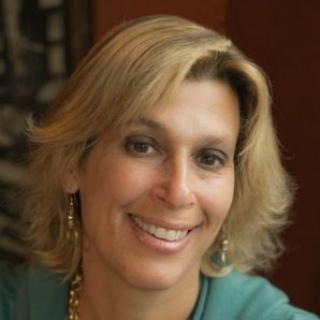
"Seattle has good civic health," said CityClub Director Diane Douglas in her opening remarks at the 2013 Colleen Willoughby Youth Civic Awards and youth-led Seattle School Board candidate debate.
"The best way to preserve it is to invest in our kids' civic education."
We've all had the opportunity for a civics education in recent weeks, but the night of September 26 stands out in my mind as a keen example of what it means to be an engaged citizen, in terms of education.
The Vera Project facility at Seattle Center was jammed with kids eating sliders and talking animatedly about their volunteer activities. Awards were being given to five youth service organizations: OneAmerica Youth program, which engages high school students from immigrant communities; the Service Board, which allows youth to explore social justice through service projects, mentorship, arts and sports (including snowboarding); Washington State University's 4-H Know Your Government program; the Washington State Legislative Page program; and Washington YMCA Youth and Government program, which runs youth legislature and mock trial programs.
Prior to the presentation of the awards, Willoughby, a founder of CityClub and the Washington Women's Foundation and a lifelong civic volunteer, addressed the crowd.
"Building a community is the work of a lifetime," she told us. "It takes passion, patience and persistence."
School Board debate
After the awards were presented, students moderated a debate among Seattle School Board candidates, with questions prepared by several of the student youth leaders from the award-winning organizations. Candidates Sue Peteres, Suzanne Dale Estey and Stephan Blanford, (his challenger LaCrese Green was stuck in that day's Viaduct traffic closure) grappled with how to effectively manage a school district with limited resources and new academic standards.
Here's more info about these candidates and the Seattle School Board.
"How will you spend the extra money that has been promised by the legislature?" the students wanted to know, referring to increases in budgeted education funding, as mandated by the state Supreme Court.
Suzanne Dale Estey said that class sizes are too big and funding is too small.
"Apply new resources strategically," said Peters. "Make research-based decisions," said Blanford.
All expressed concern about implementation of the new Common Core State Standards, though Blanford professed himself a fan of of the concept. Peters said the new standards are an "unfunded mandate." Estey said for Common Core implementation to be successful, teachers need adequate professional development.
Peters and Blanford expressed concerns about too much testing. Estey countered that sometimes testing is meaningful, citing a teacher who liked the data provided by the Measures of Academic Progress (MAP) test, which provides student achievement feedback at multiple points during a school year. "He told me he wants 'physicals, not autopsies,'" she said.
A threat to public education?
I couldn't stay to hear the rest of the debate because, across town, at University of Washington's Kane Hall, anti-education reform activist Diane Ravitch was speaking about education through a national lens.
I'll be writing more about Ravitch, a former senior official with the Department of Education and early architect of the 2002 No Child Left Behind education reforms under George W. Bush. She's since done a radical about-face and now sees reform efforts as a threat to public education. Her latest book, Reign of Error: The Hoax of the Privatization Movement and the Danger to America's Public Schools, which was released on September 17, debuted at No. 10 on the New York Times bestseller list.
I disagree with Diane Ravitch in many areas and find her a polarizing figure, but I also find much of what she says compelling. She is unabashed in her assertion that child poverty has a huge impact on education outcomes and that income disparity in the U.S., which has the widest gap in history, must be addressed. She is passionate about educational equity for all.
Setting boundaries
I thought about this on October 1, while attending last of the community meetings on the Seattle Public School's proposed new enrollment boundaries at Ballard High School. (That night, the school was also hosting a fundraising performance by one of the lesser-known stars of the popular television show Glee to benefit the music department — a different sort of resource management.)
The vocal crowd present at this meeting had two major messages for SPS: Keep neighborhoods and programs together. Among the concerns in the Northwest region is a boundary restructuring that will reassign some students currently in the North Beach Elementary region to Loyal Heights Elementary. City-wide, some students in the growing Accelerated Progress Program (APP), which has borne the brunt of several moves, will be temporarily housed awaiting completion of a new building. There is also concern that the new boundaries will disproportionally affect students in low-income schools, pushing them out of walk zones and onto buses.
Following receipt of public feedback, SPS will introduce its recommendations to the Seattle School Board on October 16. The Board is scheduled to vote on the recommended boundaries on November 20. Once approved, some of the boundary changes will take effect for the 2014-2015 school year.
Is education essential?
October 1 was also the first day of the government shutdown, when government operations were deemed "essential" or "non-essential." Is education essential? Here's Education Week's take on the impact of the fiscal showdown on education.
We're all feeling the effects of the government shutdown, some in big ways, others in small ways. But let's get back to civics for a minute.
Diane Ravitch says that the job of public schools is to prepare students for citizenship. She adds,
"No matter where your child goes to school, you have a civic obligation to support free public schools for all. Society's obligation is to level the playing field.
"Treasure public education; make it stronger and better. It belongs to us all."
Education news briefs
Do the math: Seattle Public Schools (SPS) is accepting applications from SPS families and community members interested in serving on the District’s Math Adoption Committee.The committee, which will be comprised of math teachers and community and family members, will advise SPS on the selection of mathematics instructional materials for kindergarten through Grade 5 students that meet the new Common Core State Standards for mathematics. The goal is to have materials adopted in time for the 2014-15 school year. Applications are due to the Math Adoption coordinator no later than Oct. 16, 2013. Those selected as committee members will be notified by email or by telephone during the first week of November. More information and the application form can be found here.
Do the science: The adoption of the Next Generation Science Standards was announced by Gov. Jay Inslee and Superintendent of Public Instruction Randy Dorn at a press conference at Cascade Middle School in the Highline School District. Next Generation is a set of internationally benchmarked standards that are rich in content and practice and connect multiple science disciplines. For the first time, Washington State will also have a set of K‒12 engineering standards, which are embedded in the new Science Standards.
May his legacy live on: Eastside Pathways has announced the establishment of the Bill Henningsgaard Fund for Children, which will support low-income children and youth participation in programs offered by this community service organization.
SIG-nificant gains: Washington State schools that received three-year federal School Improvement (SIG) grants have made impressive gains in student achievement in math and reading. Twenty-seven schools each received between $50,000 and $2 million every year for three years. Cohort I consists of 17 schools. They were awarded grants from 2009‒2010 through 2011‒2012. Their final results, by school, are available from the Office of the Superintendent of Public Instruction here.




